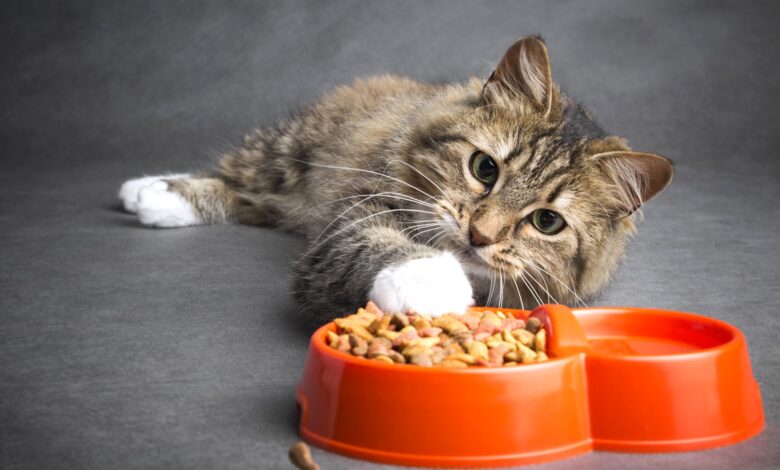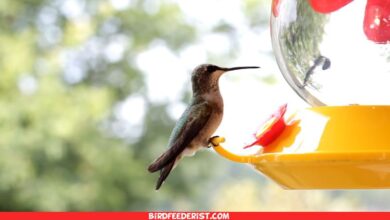
Have you ever wondered how long Cats go without Food? Whether you have a picky eater or a sick cat who is refusing to eat, it’s important to understand how long your feline friend can survive without food. In this blog post, we will explore the basics of feline nutrition, the timeline of how long cats can go without food, the physical and behavioral impacts of starvation on cats, the importance of monitoring your cat’s eating habits, when to seek veterinary care for a cat not eating, and tips and strategies for helping a cat that refuses to eat.
Understanding the Basics of Feline Nutrition
Cats, as obligate carnivores, have a unique dietary structure that requires them to consume mostly animal-based proteins to meet their nutritional needs. Their bodies are specifically adapted to efficiently process meat, which provides the essential amino acids, vitamins, and minerals necessary for optimal health. A key component of their diet is taurine, an amino acid found exclusively in animal tissues. Taurine supports heart health, vision, and reproduction, and its deficiency can lead to severe health complications in cats, including heart disease and blindness.
Another critical nutrient is arginine, which plays a vital role in ammonia detoxification in the liver. A diet lacking in arginine can quickly lead to a build-up of ammonia in the bloodstream, which is fatal. Cats Food require a specific balance of fatty acids that must be derived from their diet, as well as vitamin A, which unlike humans, they cannot synthesize from plant-based beta-carotene.
The protein content in a cat’s diet not only supports muscle maintenance and repair but also fuels their metabolic processes, making it a non-negotiable part of their daily intake. Unlike some animals that can adapt to a variety of diets, cats have a limited ability to process carbohydrates, and high levels can lead to obesity and diabetes.
Ensuring that your cat has access to a diet formulated to meet these strict carnivorous needs is critical. It’s not just about the quantity of food but the quality and composition that respects their biological necessities. Feeding them a diet that mimics what they would eat in the wild as closely as possible will support their overall health, energy levels, and longevity.
The Timeline: How Long Cats Can Survive Without Food
Understanding the timeline for how long cats can survive without food is crucial for any pet owner. While cats can technically live without food for up to two weeks, it’s imperative to recognize that this is a threshold that should never be approached intentionally. The survival duration heavily depends on a cat’s initial health status and, more importantly, their hydration level. Water intake remains a critical factor during periods of fasting, as dehydration can lead to serious health issues much faster than starvation.
During the first few days without food, a cat will utilize fat stores for energy, but this process also releases proteins that the liver must then process. This can quickly become problematic, as cats have a limited ability to metabolize fat, which can lead to hepatic lipidosis, a potentially fatal liver disease. The risk of this condition increases significantly after just 48 hours of not eating.
Even before reaching the two-week mark, the lack of essential nutrients like taurine and arginine can begin to impact a cat’s health adversely. Early intervention is key to preventing the cascade of health issues that can arise from extended periods without food.
Recognizing the early signs that a cat is not eating and understanding the urgency in addressing this issue can make a significant difference in the outcome. While the two-week survival statistic might offer a small comfort in emergency situations, the focus should always be on preventing your cat from ever reaching that critical point.
The Physical Impact of Starvation on Cats
The repercussions of prolonged starvation in cats extend beyond mere weight loss, venturing into a more critical territory that jeopardizes their overall physical condition. As a cat’s body is deprived of the essential nutrients it relies on for daily function, a series of detrimental changes begin to unfold. Initially, the body will attempt to compensate by metabolizing fat reserves for energy. However, this survival mechanism can inadvertently trigger the onset of hepatic lipidosis, a serious liver condition that poses a significant threat to the cat’s life if not promptly addressed.
Muscle wasting is another alarming consequence of inadequate nutrition, where the body, in its desperate attempt to sustain vital functions, begins to consume its own muscle tissue. This not only leads to a noticeable decrease in the cat’s strength and physical condition but also compromises its ability to recover from illness or injury.
Dehydration, a common side effect of decreased food intake, can rapidly escalate the severity of the situation. Without sufficient water, a cat’s body struggles to perform basic physiological processes, leading to further organ stress and potential failure.
Furthermore, the immune system’s efficacy is directly tied to the nutritional status of the animal. A cat enduring starvation is at a heightened risk of succumbing to infections and diseases, as its body lacks the resources to mount a robust immune response.
In sum, the absence of proper nourishment catalyzes a cascade of physical impairments that, without intervention, can culminate in irreversible organ damage and, ultimately, death. It underscores the importance of recognizing and responding to the signs of decreased appetite in cats to avert these severe health consequences.
Behavioral Changes in Cats Who Aren’t Eating
Cats experiencing a lack of appetite may demonstrate a variety of behavioral shifts that signal their discomfort or distress. One of the first signs pet owners may notice is a decrease in their cat’s energy levels, leading to lethargy or an unusual amount of time spent sleeping. Normally playful or sociable cats might suddenly seem disinterested in engaging with their owners or environment, withdrawing to secluded areas of the home.
Another indicator of potential health concerns is irritability or increased aggression when approached or handled, especially in areas around their food bowl or during regular feeding times. This can be particularly apparent in cats who typically enjoy human interaction. Additionally, some cats might develop an unusual fixation on water, drinking excessively, or conversely, show a marked disinterest in both food and water.
Changes in grooming habits can also accompany a decrease in appetite. A cat that once prided itself on cleanliness might neglect grooming, leading to a disheveled appearance, or conversely, overgroom certain areas, possibly in an attempt to soothe themselves.
It’s also not uncommon for a cat’s vocalizations to change. They may become more vocal, meowing more frequently or loudly as a way to express their discomfort or needs, or they might become unusually quiet, withdrawing into silence.
Observing these behavioral changes provides critical clues that a cat is not just being finicky about food but may be experiencing underlying health issues. Early recognition of these signs and timely intervention can be crucial in addressing the root cause of their decreased appetite.
The Importance of Monitoring Your Cat’s Eating Habits
Keeping a watchful eye on your cat’s eating habits plays a pivotal role in maintaining their health. Observing how much and how often your feline friend consumes food offers invaluable insights into their overall well-being. Sudden changes in appetite can signal various health issues, from minor ailments to more serious conditions requiring medical attention.
Cats are adept at masking discomfort and illness, making it all the more critical for pet owners to notice subtle shifts in behavior that could indicate a problem. A decrease in appetite, for instance, might be one of the first noticeable symptoms of underlying health concerns such as dental pain, digestive disturbances, or other medical complications.
Furthermore, tracking your cat’s food intake can help you assess their nutritional needs and ensure they are receiving a balanced diet tailored to their age, health status, and lifestyle. It enables you to adjust their feeding regimen as necessary, promoting optimal health and preventing obesity or malnutrition.
Being proactive in monitoring can also prepare you for discussions with your veterinarian, providing a clear picture of your cat’s eating patterns and any recent changes. This information is crucial for diagnosing potential issues and crafting an effective treatment plan.
In essence, vigilance in observing your cat’s eating habits is not merely about monitoring the quantity of food consumed but also about understanding and responding to what these patterns reveal about your cat’s health and nutritional needs.
When to Seek Veterinary Care for a Cat Not Eating
When your cat shows a lack of interest in food for more than 24 hours, it’s critical to consider immediate veterinary intervention. Cats are masters at hiding their discomfort and illness, making early signs of decreased appetite a potentially significant health alert. This behavioral change can stem from a variety of causes, including but not limited to dental pain, gastrointestinal disturbances, infections, or more severe conditions like kidney disease or diabetes.
A veterinarian’s evaluation will likely involve a comprehensive physical examination, possibly accompanied by blood tests, urinalysis, X-rays, or ultrasounds to pinpoint the underlying cause of your cat’s anorexia. Prompt diagnosis and treatment are crucial to prevent the rapid onset of secondary issues such as hepatic lipidosis, which can develop in cats who don’t eat for an extended period.
It’s also beneficial for pet owners to observe and report any accompanying symptoms such as vomiting, diarrhea, lethargy, or unusual behavior alongside the loss of appetite. These details can provide valuable clues that aid in the diagnostic process. Remember, the sooner a health issue is identified and treated, the better the chances of a full recovery for your cat. Engaging with your veterinarian early on ensures you’re taking an active role in safeguarding your cat’s health.

Helping a Cat That Refuses to Eat: Tips and Strategies
Encouraging a cat that’s lost its appetite can sometimes feel challenging, but several effective strategies can make a significant difference. Trying a variety of foods can be especially useful, as cats might be more inclined to eat when presented with different textures and flavors. This could include a mix of wet and dry food, or even a small amount of a specially prepared diet from your veterinarian. Gently warming up their food to just below body temperature can also help, as it enhances the food’s aroma and makes it more appealing to your cat.
Creating a quiet, stress-free dining environment is another key strategy. Cats are often sensitive to their surroundings, so offering food in a peaceful area away from loud noises and high traffic can encourage eating. Providing constant access to fresh water and ensuring their feeding area is clean will also make mealtimes more enticing.
For cats that still show reluctance, hand-feeding might be a temporary solution. A little patience and gentle encouragement can go a long way. Using interactive feeding toys may also stimulate their interest in food by engaging their natural hunting instincts.
If these approaches do not improve your cat’s appetite, it is essential to consult with your veterinarian for further advice and to rule out any underlying health issues that might be causing their lack of interest in food.
Conclusion
In wrapping up, while cats have the capability to endure periods without food for a considerable time, it’s crucial to recognize that proactive intervention is key to avoiding health complications. Keeping a keen eye on how much and how often your cat eats, along with their overall behavior and physical condition, can provide early warning signs of potential issues. In cases where your cat’s appetite wanes, it’s imperative to seek veterinary assistance promptly to diagnose and treat the underlying cause effectively. Additionally, employing various strategies to encourage your cat to eat can play a pivotal role in their recovery and well-being. From offering diverse food options to creating a comfortable feeding environment, these efforts can significantly impact their desire to eat. Ultimately, your active involvement in monitoring and managing your cat’s nutritional intake and health signals your commitment to their longevity and quality of life.





